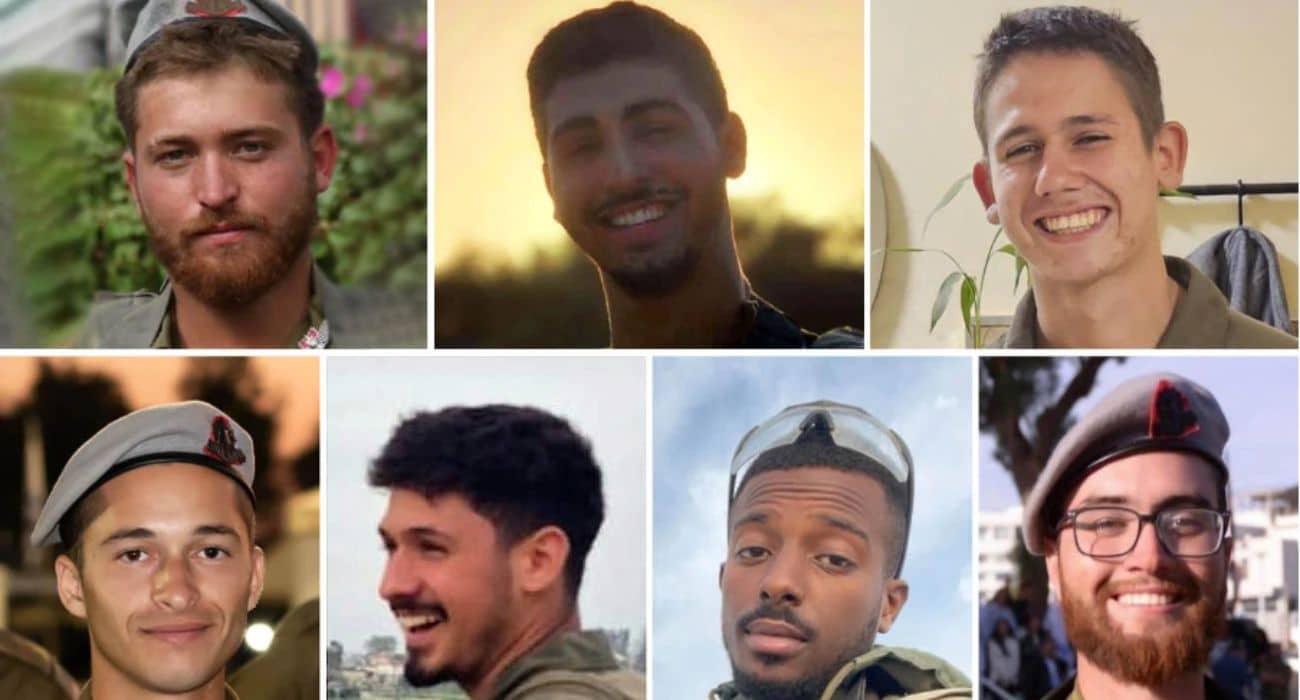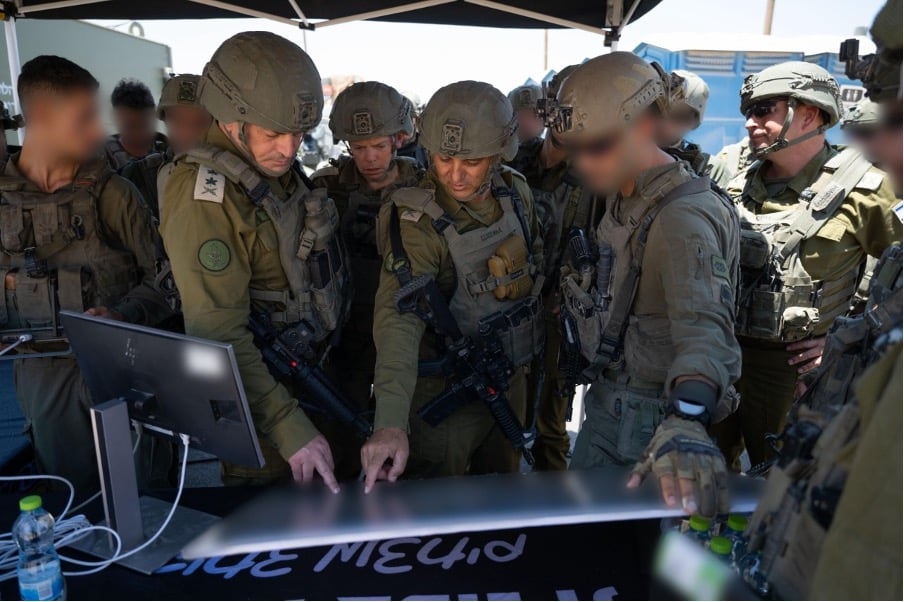
Overview
- President Donald Trump predicted a ceasefire could be achieved in Gaza “within the next week”, as Israeli Strategic Affairs Minister, Ron Dermer is set to visit Washington for talks on both Gaza and Iran.
- The US has reportedly notified regional mediators that it is actively pressuring Prime Minister Netanyahu to agree to a ceasefire in Gaza
- Seven soldiers from the combat engineering Unit from Battalion 605 were killed when a Hamas militant threw an explosive device into their armored personnel carrier.
- IDF Chief of Staff Eyal Zamir declared Iran is no longer a nuclear threshold state after the Israeli and US strikes.
- Iran’s Foreign Minister, Abbas Araghchi, announced that Iran will not allow the International Atomic Energy Agency (IAEA) to install cameras at its nuclear facilities.
- The “Abu Shabab” militia accused Hamas of turning medical facilities—especially the Nasr Hospital—into military posts and weapons storage sites, using ambulances and health buildings for combat and detention
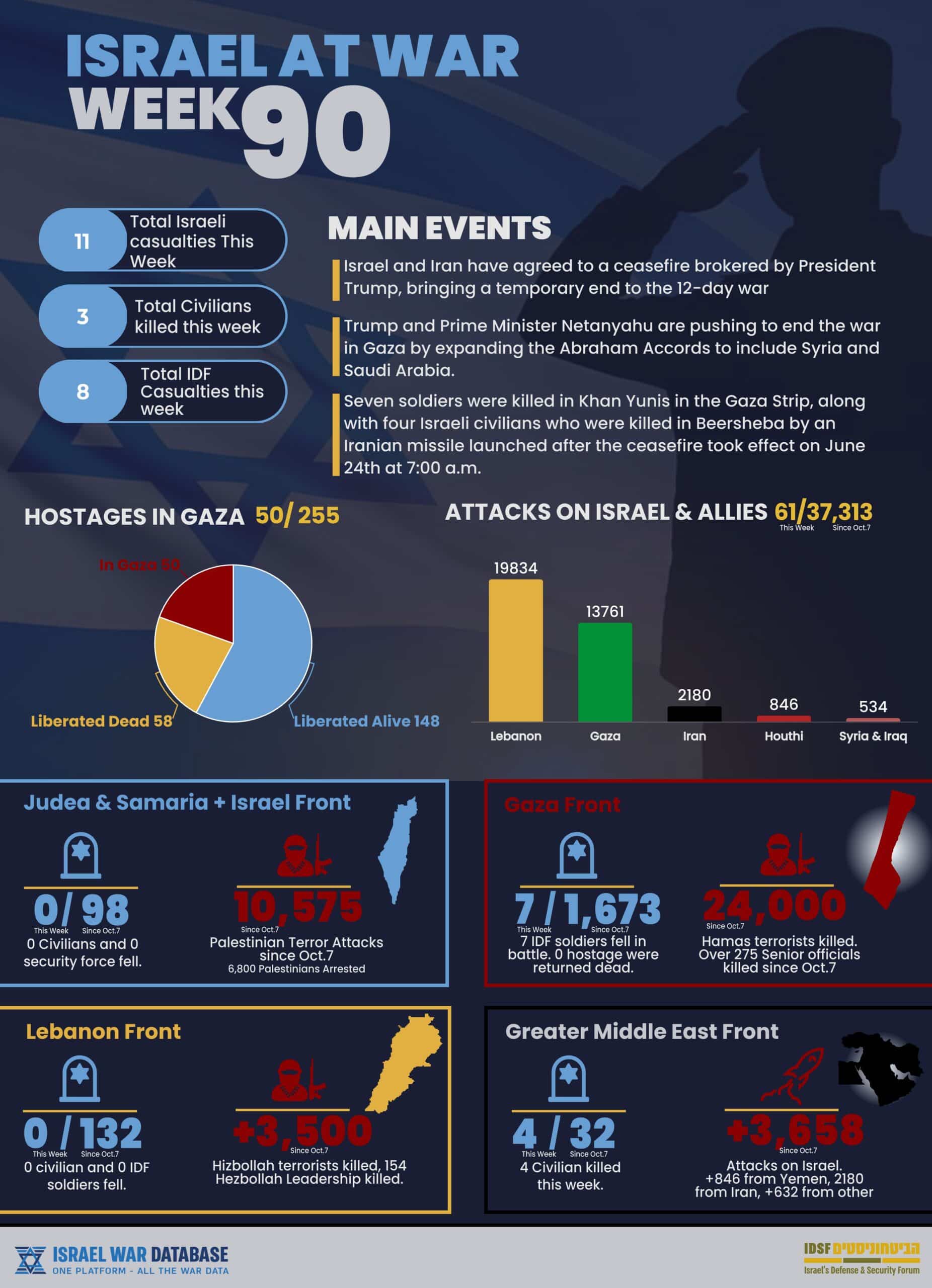
Gaza
Ceasefire Deal
- US Mediation: US envoy Steve Witkoff is scheduled to visit Cairo soon for crucial ceasefire and hostage deal talks. Egyptian sources revealed that the US is organizing a Gaza meeting in Doha and intends to present a plan to end the war within days. US pressure on Netanyahu to accept a long-term truce is increasing.
- Deal Prospects: Palestinian-American mediator Bishara Bahbah stated that an agreement could be reached “within days,” with disputes largely remaining over whether the temporary ceasefire will be extended if no permanent deal is reached, as Hamas demands.
- President Donald Trump predicted a ceasefire could be achieved in Gaza “within the next week.”
- Israeli Strategic Affairs Minister Ron Dermer, a key adviser to Netanyahu, is set to visit Washington for talks on both Gaza and Iran.
- A senior Palestinian source told Sky News Arabia that Hamas is making several firm demands as preconditions for any potential deal. These demands include ensuring that no harm will come to its political bureau members living abroad, protection from the confiscation of Hamas funds, and freedom from international travel restrictions. Furthermore, Hamas insists on being granted a significant role in administering Gaza after the war and is seeking explicit US guarantees that the fighting will not resume after a ceasefire is reached.
- The US has reportedly notified regional mediators that it is actively pressuring Prime Minister Netanyahu to agree to a ceasefire in Gaza, with Washington preparing to present a comprehensive plan to end the war in the coming days. Egyptian and other regional mediators have asked for a well-defined timeline for a truce and urged the Americans to convince Israel to implement at least a two-week pause in hostilities as an initial confidence-building measure.
- According to reports, mediators are calling for a robust and organized plan to deliver humanitarian aid to Gaza throughout the month of July, emphasizing the urgency of meeting civilian needs alongside political negotiations.
Operational
- Completion of Division 252’s Mission: The IDF’s 252nd Reserve Division (“Sini” Formation) finished its mission in northern Gaza after 4.5 months, having arrived during the ceasefire and as part of Operation “Wings of Freedom.” The division fought in the Daraj, Tuffah, Sajaiya neighborhoods and in central Gaza, destroying dozens of tunnel shafts and routes totaling 6 km. The unit was replaced by Division 99 (“Bazak” Formation), which also operated for several months in northern Gaza and was responsible for securing and expanding the Be’eri axis.
- Focus on Gaza City: Gaza City remains Hamas’s strongest stronghold. Israeli assessments suggest there may be no alternative but to capture and level it—similar to what was done in the northern third of the strip—to achieve a decisive result.
- Incident in Khan Younis (June 24, 2025): Seven soldiers from the combat engineering Unit from Battalion 605 were killed when a Hamas militant threw an explosive into their armored personnel carrier, which was loaded with explosives, causing a massive explosion and fire. Hours were spent trying to extinguish the fire, including with D9 bulldozers and sand, before it was finally put out after dragging the vehicle away.
- Hamas Attacks Documented: Hamas released several videos in recent days showing attacks on Israeli vehicles, including attaching explosives to APCs, firing mortars, RPGs, sniper fire, anti-tank missiles, and small arms fire, often at close range. These occurred in heavily mined areas in western Khan Younis, regions where the IDF has not yet operated, highlighting the dangerous task of clearing and flattening these neighborhoods.
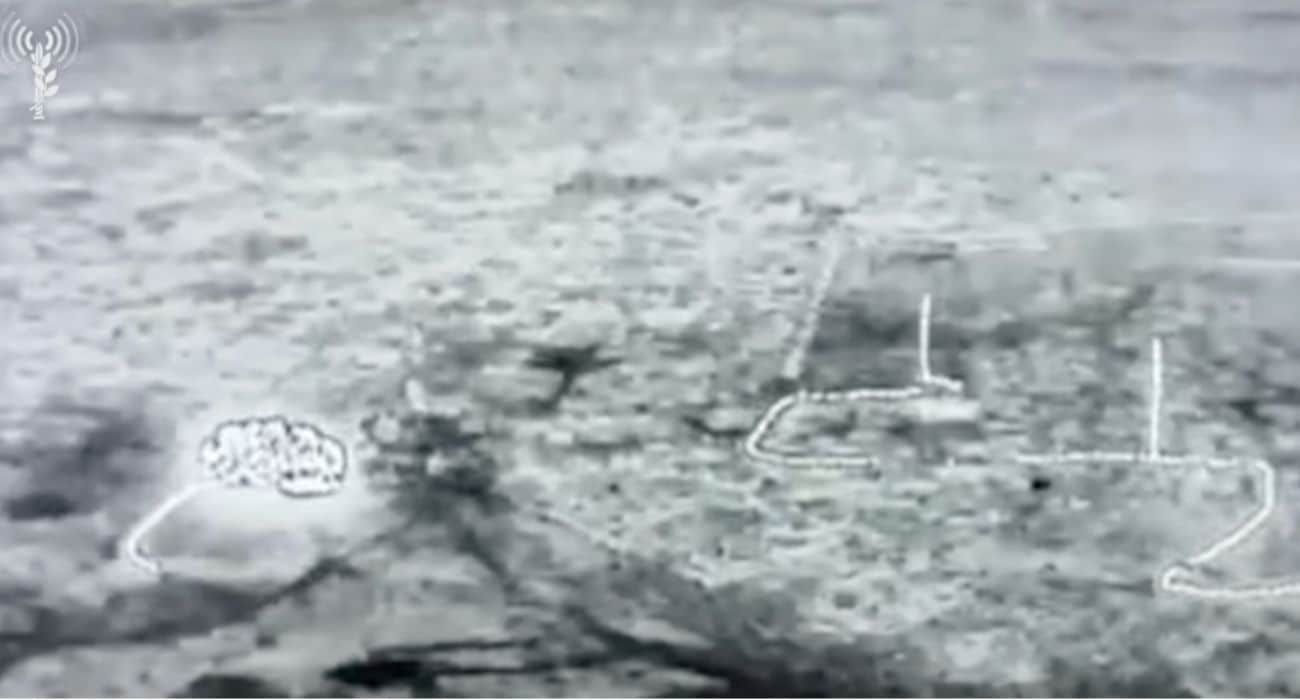
Humanitarian Aid
- US Aid and GHF: Trump authorized a $30 million donation to the Gaza Humanitarian Foundation (GHF). While acknowledging some aid is stolen by “bad people,” he called the GHF system “pretty good” and urged other countries to help resolve the humanitarian crisis.
- In northern Gaza, Hamas continues to seize aid trucks, often with the support of armed clans. Last week, 500 trucks entered the strip, many were looted—70 trucks were stolen by crowds in Khan Younis alone. In the north, Hamas uses its military power to take control and distribute food publicly to project an image of success versus the Israeli distribution system.
- In recent weeks, Hamas’s “Saham” unit has been actively working to reassert the organization’s control over the population in Gaza. Operating under the command of Az al-Din al-Haddad, the unit has resorted to violence and executions, targeting individuals who protest against Hamas, those accused of stealing food, or anyone seen as resisting the group’s authority. Under the pretext of redistributing stolen food trucks in northern Gaza, Hamas is attempting to solidify its dominance, using food aid as a tool to maintain power in contested neighborhoods.
- These actions have faced pushback. At the Nasser Hospital, located in western Khan Younis, clan members opposing Hamas set fire to the unit’s vehicles, vandalized parts of the hospital used by Hamas, and even engaged in armed clashes with its operatives. Resistance has also been reported from a clan in Nuseirat, which took up arms against Hamas, signaling a broader challenge to the group’s rule.
- Yasser Abu-Shabab, a clan leader currently sheltered in eastern Rafah under IDF protection, gave an interview to Arab media in which he condemned the October 7 massacre and insisted that his group is not affiliated with any organization. Abu-Shabab emphasized that their weapons are strictly tribal, and that they maintain coordination with Israel. Behind the scenes, there are indications that Israel continues to support his militia and potentially others, in hopes of fostering a new governing alternative as Hamas struggles to hold onto power amid growing local resistance.
- Israeli Government Response: Netanyahu and Katz ordered the IDF to present a plan within 48 hours to prevent Hamas from seizing aid.
- Allegations of IDF Misconduct: A Haaretz report accused the IDF of ordering soldiers to shoot at Palestinian civilians near aid distribution sites. The IDF and Israeli leadership rejected the accusations, calling it “blood libel.” The IDF Military Advocate General launched an investigation into possible war crimes, but the GHF stated there have been no fatalities or incidents at its distribution sites and emphasized the IDF’s responsibility to provide safe passage for aid-seekers.
- Internal Gaza Clashes: Violent confrontations erupted between Hamas and the Barbach family, a clan associated with Fatah and supported by the “Abu Shabab” militia. Hamas gunmen shot Mohammed Barbach, a leader of recent protests against Hamas and a security guard at aid distribution points, and a Hamas sniper shot a 16-year-old boy. Barbach’s leg was amputated after being shot 12 times. The Barbach family retaliated by burning the hospital entrance and killing several Hamas members. The “Abu Shabab” militia accused Hamas of turning medical facilities—especially the Nasr Hospital—into military posts and weapons storage sites, using ambulances and health buildings for combat and detention.
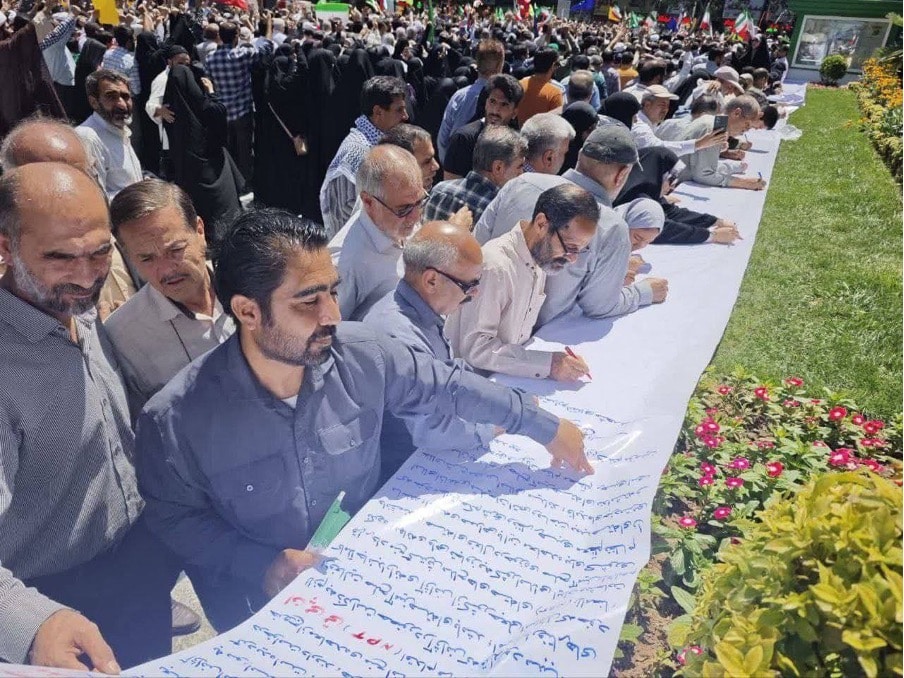
Judea and Samaria
- Counterterror Operations: Twenty suspects were arrested, including a weapons lab uncovered in Hebron (with airsoft guns and tens of thousands of shekels in terror funds). In Jenin, a weapons dealer was arrested after searches of 200 buildings and the questioning of dozens of suspects. Terror funds were confiscated in other locations as well.
- Engineering Works in Tulkarem: Significant demolition and infrastructure work took place in Tulkarem, destroying dozens of buildings to expand the camp and create new access roads for security forces.
- Clash in Kafr Malik near Ramallah: Thirty settlers entered the Arab village of Kafr Malik, sparking riots. During the ensuing clashes, three Palestinians were killed and seven wounded; an Israeli officer was lightly injured by stone-throwing.
- Attack on IDF Reservists: Several dozen Israelis attacked IDF reserve soldiers and police responding to the unrest. The assailants reportedly attempted to run over soldiers, beat, choked, and threw stones at them, and slashed the tires of a police vehicle. The IDF and the Police condemned the incident with a joint statement:” “The IDF and Israel Police condemn any act of violence against security forces and will act firmly against any attempt to harm security personnel carrying out their duty to protect Israeli citizens”. The Prime Minister, Defense Minister, Finance Minister and the Chief of Staff all released strongly worded condemnations of the incident.
Lebanon
Diplomatic
- According to reports from Al-Sharq Al-Awsat, the Lebanese military has submitted a detailed work plan to the United States, outlining a framework for reciprocal actions between Lebanon and Israel. The Lebanese proposal suggests that, in exchange for Israeli steps such as withdrawal from certain areas, halting attacks, or releasing Lebanese prisoners, Lebanon would begin the process of disarming armed groups operating north of the Litani River. However, these actions would be contingent upon firm US guarantees that Israel will adhere to its commitments.
- Internally, Lebanon is engaged in a significant debate over the future of Hezbollah’s military arsenal. President Joseph Aoun has reportedly conveyed directly to Hezbollah’s parliamentary leader that the group’s heavy weapons have outlived their original purpose and should now be transferred to the Lebanese Army, especially in the wake of the most recent conflict.
- The Lebanese President, Prime Minister, and Speaker of Parliament are expected to coordinate a unified response to the proposals brought by Tom Barrack, Trump’s envoy, who recently visited Beirut to push for swift action on Hezbollah’s disarmament. Once finalized, Lebanon’s official position will be approved by the government and communicated back to Barrack ahead of his anticipated return to the country.
- President Joseph Aoun met with the Palestinian ambassador in Beirut, Ashraf Dabbour. Following the meeting, Ambassador Dabbour emphasized that the Palestinians and their leadership fully respect Lebanon’s sovereignty and expressed their willingness to support the extension of Lebanese state authority over all its territory, including within the Palestinian refugee camps.
- Israel’s delegate has reportedly informed the US that IDF withdrawal would only begin once Hezbollah hands over all of its weapons.
Operational
- IDF conducted a series of Strikes and Operations:
- Strikes North of the Litani: The IDF struck military targets, rocket launchers, and arms depots north of the Litani River.
- Drone Strikes in Nabatieh: On Tuesday, an Israeli drone strike killed three Hezbollah operatives, including a money-changer coordinating with Iran’s Quds Force.
- Night Raid in Houla: Overnight, Israeli forces entered Houla, demolishing a Hezbollah building.
- Drone Strike in Southern Lebanon: A Hezbollah operative was killed while operating engineering equipment near a village in southern Lebanon.
- Ground Activity: the IDF conducted ground operations near one of five Hezbollah outposts, carrying out controlled detonations.
- Air Force Attack on Beaufort Castle: Israeli jets targeted a Hezbollah facility in the Beaufort Castle area, southern Lebanon.
- Financial Flows Exposed: The IDF revealed that hundreds of millions of dollars have been funneled to Hezbollah via currency exchanges in Turkey, Iraq, the UAE, and at least six bureaus in Beirut since Assad’s fall and during Israel’s “Northern Arrows” operation, to help fund Hezbollah’s reconstruction.
- On June 25, Hezbollah had to cease paying salaries to its fighters due to a cash shortage in its bank, the Al-Qard al-Hasan Association. The combination of repeated Israeli strikes in Iran—including the killing of the commander of the 190th Brigade—and financial constraints has severely limited Iran’s ability to provide support or resources to Hezbollah, impacting the group’s operational capacity in Lebanon.
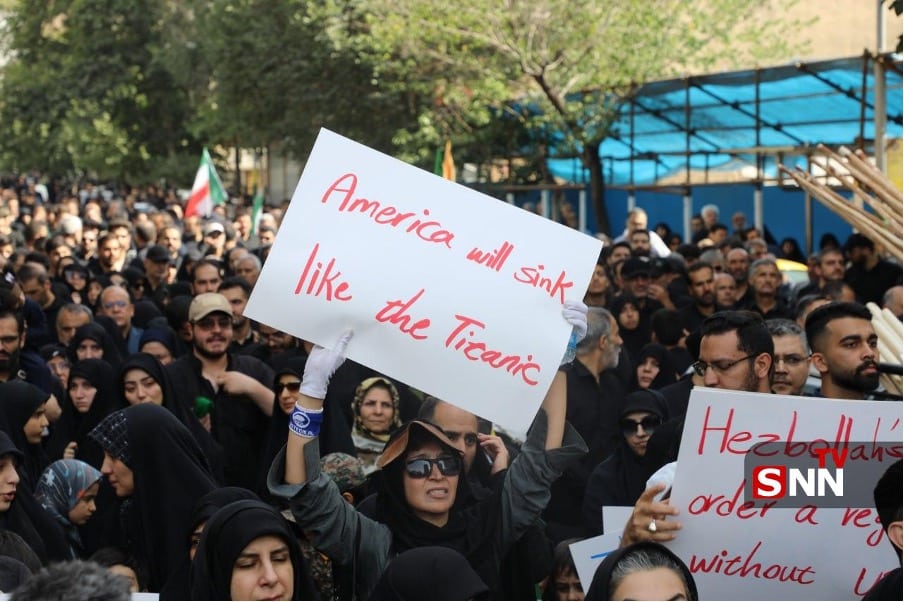
Syria
- ISIS Suicide Attack in Damascus: An ISIS suicide bomber targeted a church service in Damascus, marking the first such attack since Syrian leader Abu Mohammad al-Julani’s rise to power. At least 15 killed and dozens injured. Various accounts on social media claims that the attacker was a security agent connected to the al-Julani regime.
- Instability and Proxy Struggles: The Islamic Resistance Front in Syria—an Iranian-backed proxy—seeks to destabilize the new regime, aiming to restore Syria as an Iranian satellite after losing key weapons routes to Hezbollah due to al-Julani’s control.
- Crackdown on Shia Minorities: al-Julani’s forces attacked and destroyed Shia religious centers built for Muharram ceremonies, and the regime banned mourning rituals for Imam Hussein, a move widely reported in Syrian media.
- Suppression of Minorities and Religious Practices: al-Julani is enforcing strict Sunni Islamic law, suppressing minority rights, and banning non-Sunni religious ceremonies, with little Western attention.
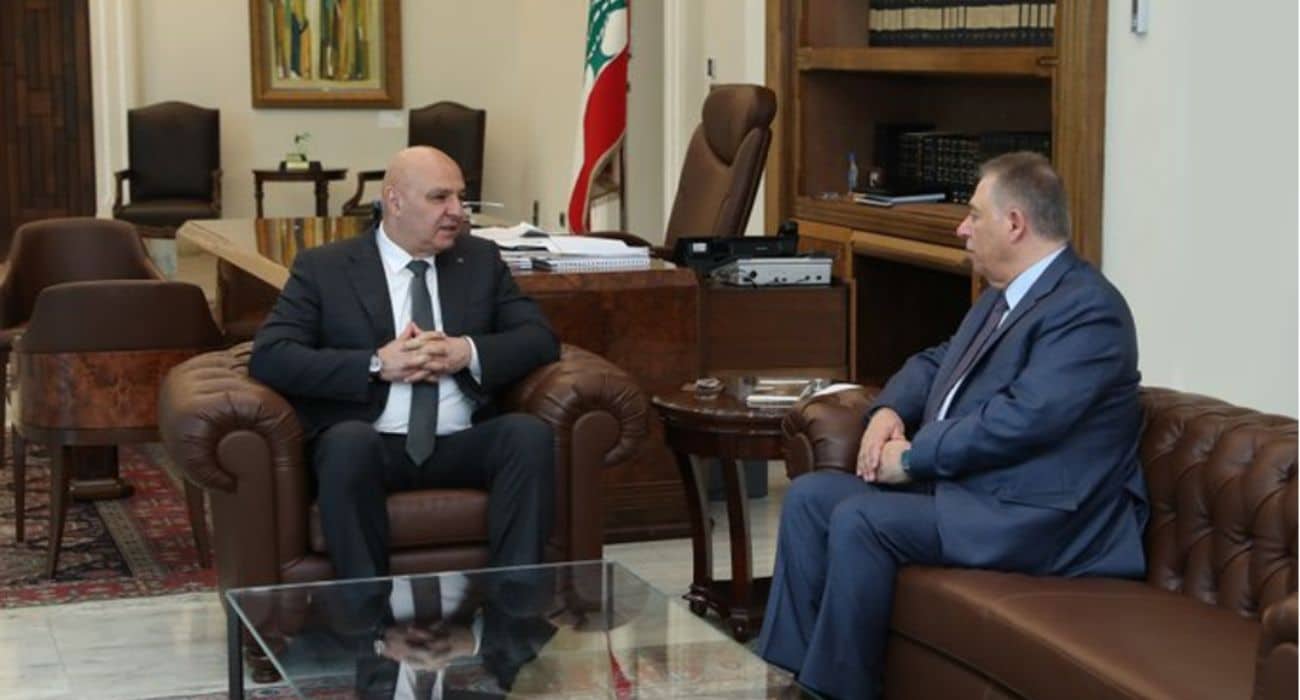
Iran
- “Rising Lion”:1,200 air sorties (including 600 aerial refuelings), thousands of munitions dropped, and 250 missile launchers destroyed. The IDF Chief of Staff stated Israel fully achieved the operation’s objectives and dealt a systemic blow to Iran’s nuclear program, setting it back by years.
- Casualties and Damage: At least 627 Iranians were killed, including dozens of senior officials and at least 35 air defense personnel; nearly 4,870 wounded. Despite this, Iran has declared victory.
- Despite suffering major setbacks, Iran is promoting a narrative of victory to ensure regime survival. At the same time, it is using the ceasefire to stall negotiations with the West while accelerating their nuclear program recovery and other rebuilding efforts.
- IDF Chief of Staff Eyal Zamir declared that Iran is no longer a nuclear threshold state after the Israeli and US strikes. There are varying assessments of the damage to Iran’s nuclear sites, but it is clear that the program was set back for years, particularly after the Israeli attack on centrifuge factories. The IAEA inspectors are now barred from entering Iran, following parliamentary approval.
- Iran’s Foreign Minister, Abbas Araghchi, announced that Iran will not allow the International Atomic Energy Agency (IAEA) to install cameras at its nuclear facilities, and stated that the head of the agency will be barred from entering the country.
- Statements and Reactions: Defense Minister Israel Katz said Israel will prevent any future Iranian nuclear weapons efforts, including enforcement. He also clarified that Israel did not kill Khamenei because his location underground was unknown.
- US and Israeli Intelligence: Trump revealed that Israeli intelligence was used to expose the destruction at Fordow. He called the attacks both an Israeli victory and, ironically, an Iranian one because the regime survived.
- Diplomatic Developments: After the military confrontation, the Iranian front has shifted to diplomacy. Trump said talks may occur with Iran next week, and a potential deal could be reached.
- Assassination Plot: According to a new book, Iran nearly succeeded in assassinating former US Secretary of State Mike Pompeo at a hotel in Paris three years ago.
- Thousands gathered in Tehran to mourn senior IRGC commanders, nuclear scientists, and civilians killed in the Israeli strikes. The event was attended by President Pezeshkian and senior officials.
- In Iran, the authorities have begun arresting prominent figures from the Jewish community, including rabbis and community leaders in Tehran and Shiraz, on allegations of connections to Israel. This has created a climate of fear, compelling the Jewish community to publicly demonstrate their loyalty to the regime.
- A special gathering was organized in Tehran, where Jewish Iranians, including those serving in the Iranian military, attended in uniform and wore yarmulkas to show support for the government in the aftermath of the ceasefire. During this event, the Jewish representative in the Iranian parliament, Homayoun Sameh, asserted—without providing evidence—those Israeli airstrikes had damaged several Jewish communal buildings. Against the backdrop of heightened regime paranoia, these public displays of support are widely seen as necessary measures by the Jewish community to avoid suspicion, persecution, or forced disappearances.
International
- Abraham Accords Expansion: US envoy Witkoff announced efforts to expand the Abraham Accords into Saudi Arabia, Oman, Kuwait, Lebanon, and Syria.
- The EU considers downgrading their relations with Israel based on a review of the EEAS Report on Human Rights Violations in Gaza. While full suspension of the agreement requires approval from all 27 member nations, partial actions can be implemented with a qualified majority. Divisions within the EU persist, with nations such as Germany and Austria reluctant to support severe actions against Israel.
- It is ironic that Europe’s response to Israel’s war defend itself against a multi-front existential threat appears to be diametrically the opposite of how countries in Israel’s (and Iran’s) immediate vicinity have reacted to Israel’s actions. Interestingly, the Abraham accords countries and countries that may join the accords have remained silent on the matter while pro-Palestinian NGOs called for a harsher action by the EU.
- In a joint press statement on June 29, 2025, German Interior Minister Alexander Dobrindt visited the site of the Iranian missile strike in Bat Yam, Israel—the first foreign-diplomatic trip since the end of Operation “Rising Lion”, accompanied by Foreign Minister Gideon Saar. “We must support Israel in the fight against terrorism”, he added.
Yemen
- Missile Intercepted: An Iran-backed Houthi ballistic missile fired at Israel was likely intercepted by air defense systems.
- On Saturday, June 28, large pro-Houthi rallies took place in Houthi-controlled areas of Yemen. Protesters celebrated “Iran’s victory” and pledged to “stand with Gaza until victory.”
Fallen Soldiers
- Matan Shai Yashinovski
- Staff Sgt. Ronel Ben-Moshe
- Ronen Shapiro
- Maayan Baruch Pearlstein
- Staff Sgt. Niv Radia
- Shahar Manoav
- Staff Sgt. Alon Davidov
